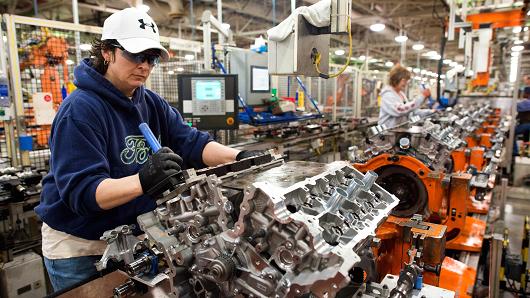The US economy contracted in 2014 Q1 to an annualized rate of 1%, official estimates have shown.
It is the worst economic performance since 2011 Q1.
It is also a big fall on the 2.6% rise in economic output in 2013 Q4.
The US Commerce Department’s first reading of gross domestic product (GDP) showed the economy grew at an annualized rate of just 0.1%.

The fall in output was blamed on an unusually cold and disruptive winter – one of the coldest in the US for 20 years – and a plunge in business investment.
Economists estimate the weather could have cost up to 1.5 percentage points of GDP.
However, the Commerce’s Department’s report did not estimate the effect of the winter weather.
The fall was also twice as big as economists expected.
Most Wall Street analysts had forecast the economy to contract by around 0.5%.
But the Commerce Department said there was already evidence that the economy was rebounding, with data ranging from employment to manufacturing activity already pointing to a sharp acceleration in economic activity in the second quarter.
Tumbling exports, while not as severe as initially thought, combined with stronger imports in the first quarter resulted in a larger than expected trade deficit which shaved 0.95 percentage points off US economic output.
Consumer spending, which accounts for more than two-thirds of US economic activity, increased by 3.1%, which was revised up slightly from 3% in the first estimate.
Business spending on non-residential structures, such as gas drilling, fell by 7.5%. It had previously been reported to have increased by 0.2%.
The report showed corporate pre-tax profits also plunged 13.7% in 2014Q1, the biggest drop since the fourth quarter of 2008.
The White House said the GDP revision was subject to a number of notable influences, including the severe winter weather, which temporarily lowered growth.
It added: “The President will do everything he can either by acting through executive action or by working with Congress to push for steps that would raise growth and accelerate job creation, including fully paid-for investments in infrastructure, education and research, a reinstatement of extended unemployment insurance benefits, and an increase in the minimum wage.”
